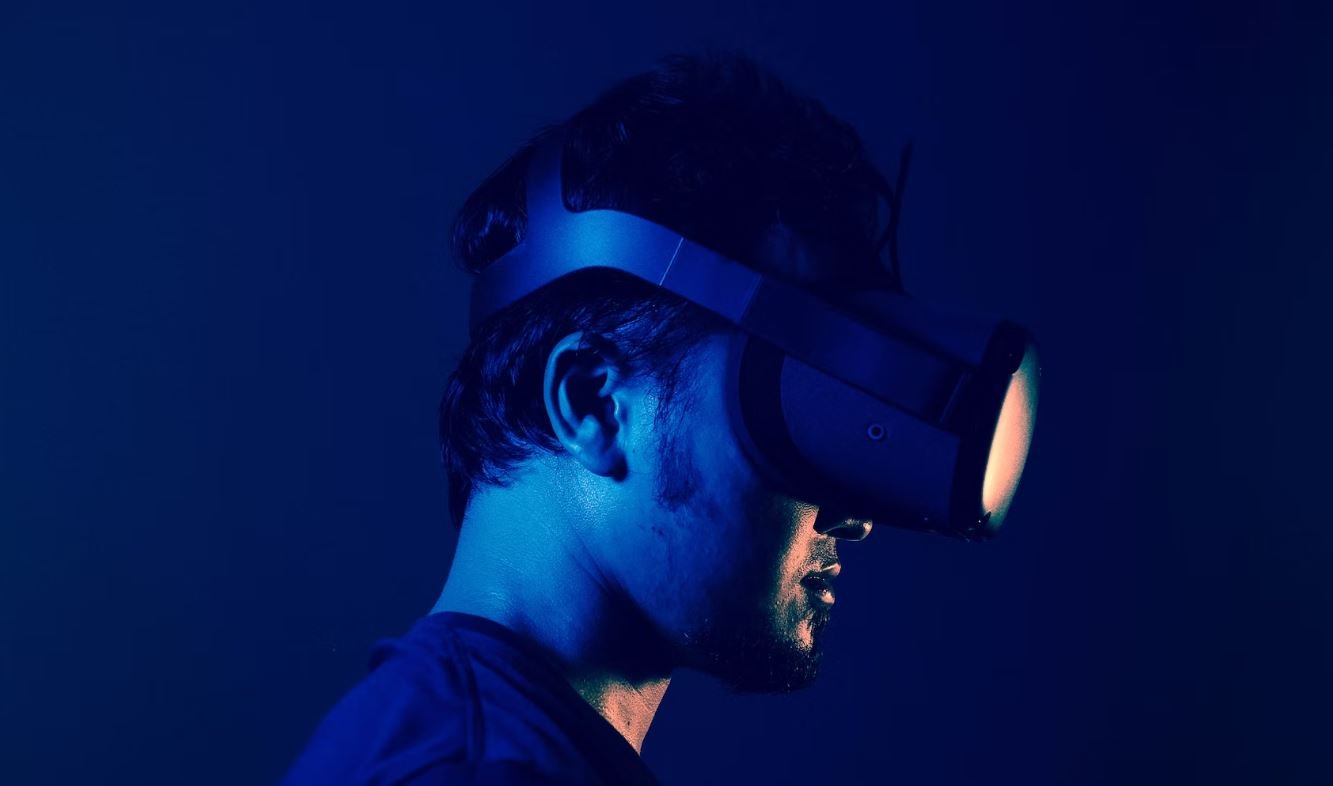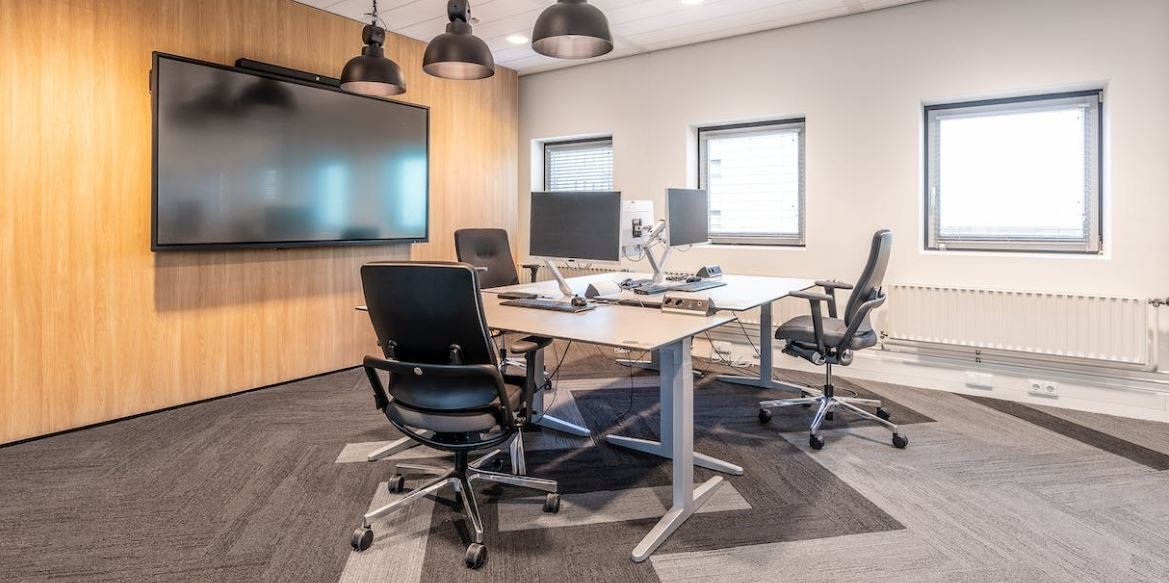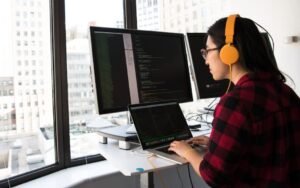Generative Art Using R
Generative art is a form of art created through autonomous systems, such as algorithms or computer programs. With the help of R programming language, creating generative art becomes a fascinating and rewarding experience. R offers a powerful set of tools, libraries, and functions that allow artists and enthusiasts to generate unique and visually stunning artworks.
Key Takeaways
- R is an effective programming language for creating generative art.
- Generative art is produced by autonomous systems like algorithms.
- R provides a wide range of tools and libraries for generating visually appealing artworks.
Introduction to Generative Art
Generative art is a process where artists use algorithms to create unique and evolving artworks. The R programming language is particularly well-suited for generating such art due to its extensive data manipulation capabilities and visual plotting libraries. By utilizing R’s functions and libraries, artists can effortlessly dive into the fascinating world of generative art and produce complex and visually stunning creations.
With the help of R, artists can unleash their creativity and transform code into captivating pieces of generative art.
The Power of R for Generative Art
R’s extensive capabilities make it a powerful tool for generative art. Here are some key benefits:
- R’s wide range of libraries, such as ggplot2 and gganimate, provide convenient functions for creating beautiful visualizations.
- The ability to manipulate data using functions like dplyr and tidyr allows artists to control and shape their artwork.
- The integration of R with other art mediums, such as music or physical installations, enables the creation of multi-dimensional generative art experiences.
With R’s power, artists can create complex and dynamic generative art that combines aesthetics with meaningful data manipulation.
Getting Started with R for Generative Art
To begin creating your own generative art using R, follow these steps:
- Install R on your computer from the official R website (https://www.r-project.org).
- Choose an integrated development environment (IDE) for writing and executing R code, such as RStudio.
- Learn the basics of R programming, including syntax and data manipulation, to effectively explore and create generative art.
- Explore the vast range of R packages related to generative art, such as tidyverse and animation.
- Experiment with different algorithms, functions, and visualizations to generate unique and captivating artworks.
By following these steps, artists can quickly start their journey into generative art using R and unlock their creative potential.
Interesting Data Points
| Data Point | Description |
|---|---|
| Number of R packages available on CRAN | Over 16,500 packages are available for artists to explore and utilize in their generative art projects. |
| Lines of code written in R | The R programming language has billions of lines of code written by various contributors worldwide. |
Exploring Different Generative Art Techniques
R offers a vast array of techniques and possibilities for generative art. Here are some popular techniques:
- Fractal art: Utilizing mathematical functions to create self-repeating patterns and structures.
- Particle systems: Simulating the behavior of particles and their interactions to generate dynamic visual effects.
- Cellular automata: Using a grid of cells with simple rules to create complex and emergent patterns.
Exploring different generative art techniques allows artists to discover their own unique style and creative expressions.
Table of R Packages for Generative Art
| Package Name | Description |
|---|---|
| ggplot2 | A powerful plotting library for creating visually appealing artworks. |
| animation | Provides functions for creating animated generative art. |
| rayshader | Enables the creation of 3D plots and visualizations for immersive generative art experiences. |
Conclusion
Generative art opens up a whole new world of creativity, allowing artists to transform code into visually stunning and dynamic artworks. With R programming language, artists have access to powerful tools and libraries to generate diverse and captivating generative art. By exploring different techniques, experimenting with algorithms, and leveraging R’s wide range of packages, artists can create unique and meaningful generative art pieces that merge aesthetics with the power of code.

Common Misconceptions
Generative Art Using R
There are several common misconceptions surrounding the topic of generative art using R. One of the most prevalent misunderstandings is that generative art is only created through complex algorithms and coding languages. While R is a powerful tool for creating generative art, it is not the only method available. Artists can also use other programming languages, software tools, or even manual techniques to create generative artwork.
- Generative art can be created using various programming languages, not just R.
- Artists can also rely on software tools and manual techniques for creating generative art.
- Complex algorithms are not always necessary; simple coding techniques can also yield beautiful generative art.
Another misconception is that generative art created using R lacks creativity or artistic vision. Some people believe that because generative art relies heavily on algorithms and mathematical patterns, it lacks the human touch and artistic intent. However, this is far from the truth. Artists using R for generative art can infuse their unique ideas, emotions, and concepts into their artwork, creating visually stunning and thought-provoking pieces.
- Generative art created using R can exhibit the artist’s unique ideas and emotions.
- Artists can use variable parameters and manipulate algorithms to create different artistic effects.
- R provides artists with a wide range of tools and functions to express their artistic vision in generative art.
One prevalent misconception is that generative art created using R is only suitable for computer scientists or highly technical individuals. While R is a programming language primarily used for data analysis and statistical computing, it is accessible to artists and enthusiasts as well. Many resources, tutorials, and communities exist that make learning R for generative art accessible to everyone, regardless of their technical background.
- R can be learned and used effectively for generative art by artists and enthusiasts with no technical background.
- Comprehensive tutorials and communities exist that support artists in learning R for generative art.
- Artists can start with simple R code and gradually progress to more complex generative art projects.
There is also a misconception that generative art created using R is limited to static visual images. While static images are a common output of generative art, R can also be used to create dynamic and interactive artworks. By incorporating interactivity through user inputs or real-time data, artists can create immersive generative experiences that respond to the viewer’s actions or external factors.
- R can be used to create dynamic and interactive generative art.
- Artists can incorporate user inputs or real-time data to make their generative artworks responsive and interactive.
- Generative art created using R can span various mediums, including animation, video, and interactive installations.

Generative Art: An Exploration of Creative Expression
Generative art is a captivating form of artistic expression that utilizes algorithms, mathematical equations, or computer programs to generate unique visual or auditory creations. By harnessing the power of technology, artists can create intricate and mesmerizing pieces that push the boundaries of traditional art. In this article, we delve into the fascinating world of generative art and its applications, showcasing varied examples that highlight its creative potential.
An Ethereal Tapestry of Colors
Beneath the surface of this captivating artwork lies a complex algorithm that generates a harmonious blend of vibrant colors. The colors subtly transition from one shade to another, creating an ethereal tapestry that mesmerizes the viewer. Each swirling pattern showcases the infinite possibilities that can arise through combining mathematical algorithms and artistic vision.
An Evolving Symphony of Shapes
This dynamic composition showcases a symphony of geometric shapes that morph and transform over time. The intricate patterns of squares, triangles, and circles gradually shift and evolve, stimulating the eye and captivating the imagination. With each passing moment, the artwork unveils a new chapter, inviting the viewer to embark on a journey of infinite exploration.
Fluidity in Motion
Inspired by the fluidity of water, this generative art piece emulates the graceful undulations of waves cascading through a tranquil ocean. As the digital brushstrokes interplay, they form intricate patterns that mimic the ebb and flow of water. This captivating artwork serves as a testament to the limitless possibilities of merging technology and artistic expression.
The Dance of Chaos and Order
A delicate balance between chaos and order emerges in this awe-inspiring creation. The interplay between intricate patterns and seemingly random elements captures the essence of generative art. Like a beautifully choreographed dance, this artwork showcases the harmonious union of chaos and order, commanding attention and sparking contemplation.
Organic Evolution
This captivating artwork draws inspiration from nature’s ability to adapt and evolve. Intricate patterns emerge and intertwine, reminiscent of the interconnectedness found within ecosystems. Like the unfurling of a blooming flower or the growth of intertwining vines, this generative piece highlights the beauty and complexity of nature’s systems.
The Symphony of Sound and Light
Merging auditory and visual delights, this generative art piece creates a mesmerizing symphony of harmonious colors and tones. As musical notes are transformed into vibrant hues, the artwork invites viewers to explore the interplay between sound and vision. It serves as a testament to the limitless possibilities of combining different art forms into a single immersive experience.
Order in Chaos: Fractal Exploration
Delving into the intricate world of fractals, this artwork unveils mesmerizing details that emerge from repeated mathematical patterns. With each zoom, the viewer discovers new levels of complexity, unveiling miniature universes within the artwork. This exploration of chaos and order invites contemplation on the interconnectivity of all things.
The Hidden Dimensions of Symmetry
Beneath the surface of this seemingly simple artwork lies a mathematical algorithm that uncovers hidden dimensions of symmetry. The intricate interplay of lines and shapes creates a mesmerizing visual experience, evoking a sense of awe and fascination. This generative art piece serves as a reminder that beauty can be found even in the most intricate and unexpected places.
Unleashing the Power of Data
Drawing inspiration from the vastness of data, this generative artwork transforms abstract information into captivating graphics. Each stroke and line represents data points, bringing them to life in a visually stunning way. This creation celebrates the power of data and reminds us of the beauty that lies within information.
In this exploration of generative art, we have witnessed the transformative potential of algorithms, mathematics, and technology in the realm of artistic expression. Through the unique synthesis of creativity and computation, generative art allows artists to create captivating works that inspire awe and invoke contemplation. As we continue to push the boundaries of technology, the possibilities for generative art are seemingly limitless, promising a future brimming with untapped creative potential.
Frequently Asked Questions
What is generative art?
Generative art refers to the practice of using algorithms, rules, or procedures to create visual or auditory artworks. It involves automatic or semi-automatic processes that exhibit emergence, randomness, or self-organization.
How can R be used for generative art?
R is a programming language and environment commonly used for statistical computing and graphics. It provides a wide range of tools and libraries that can be leveraged to create generative art by manipulating and generating visual representations of data.
What are some common techniques used in generative art with R?
Common techniques in generative art using R include fractal generation, cellular automata, random number generation, image manipulation, procedural generation, and data visualization. These techniques can be combined or customized to create unique and interesting artworks.
Can I create interactive generative art with R?
Yes, R provides various libraries and packages that enable the creation of interactive generative art. You can use interactive graphics libraries like ggplot2 or shiny to allow user input and dynamically modify the generative art based on the input parameters.
Are there any specific R packages designed for generative art?
While there are no specific R packages solely dedicated to generative art, several packages such as ‘ggplot2’, ‘animation’, ‘rgl’, ‘rayshader’, and ‘gganimate’ offer functionalities that can be utilized for generative art purposes. These packages provide tools for creating and manipulating visual elements to generate various forms of art.
Is programming knowledge required to create generative art using R?
Yes, a basic understanding of programming concepts and the R language is essential to create generative art using R. You need to be familiar with R syntax, data structures, control flow, and functions in order to design and execute algorithms that generate art.
Can I export and share my generative art created with R?
Yes, R allows you to export your generative art in various formats such as image files (PNG, JPEG, etc.), animations (GIF, MP4), or even interactive web applications. You can share your artwork on social media platforms, websites, or display them in galleries and exhibitions.
Where can I find examples and inspiration for generative art using R?
You can find examples and inspiration for generative art using R on various online platforms. Websites like GitHub, RStudio Community, and DataCamp provide code repositories, tutorials, and forums where artists share their work and discuss techniques. Additionally, exploring R-related blogs and forums can also provide insights and inspiration.
Can generative art created with R be used for commercial purposes?
Yes, generative art created with R can be used for commercial purposes, provided that you have the necessary permissions or rights for the underlying data, images, or libraries used in the artwork. It’s always recommended to properly attribute and respect the licenses of any resources you use in your artwork.
Are there any online communities or events dedicated to generative art using R?
Yes, there are online communities and events dedicated to generative art using R. Platforms like Reddit and Stack Overflow have dedicated communities where people discuss generative art techniques and share their work. Additionally, R-related conferences, such as useR! and RStudio’s rstudio::conf, often feature sessions or workshops on generative art.




